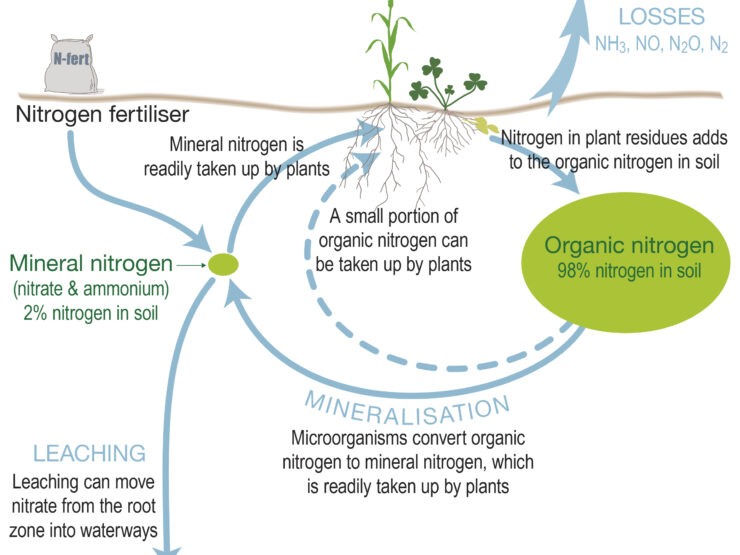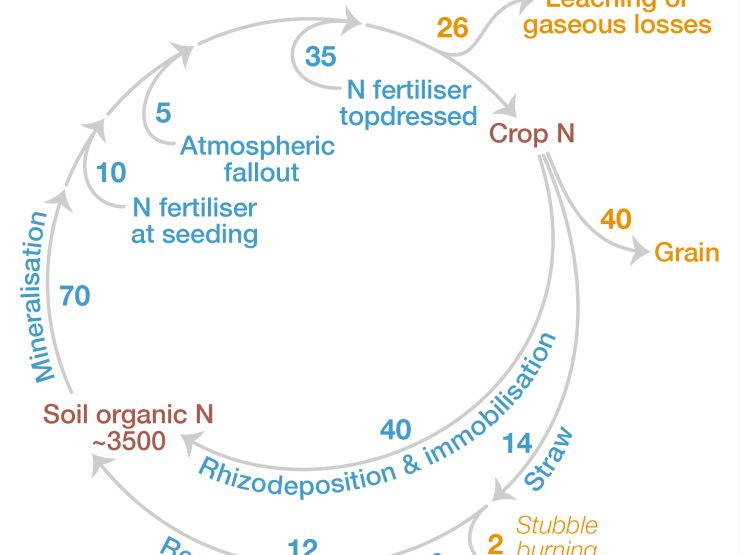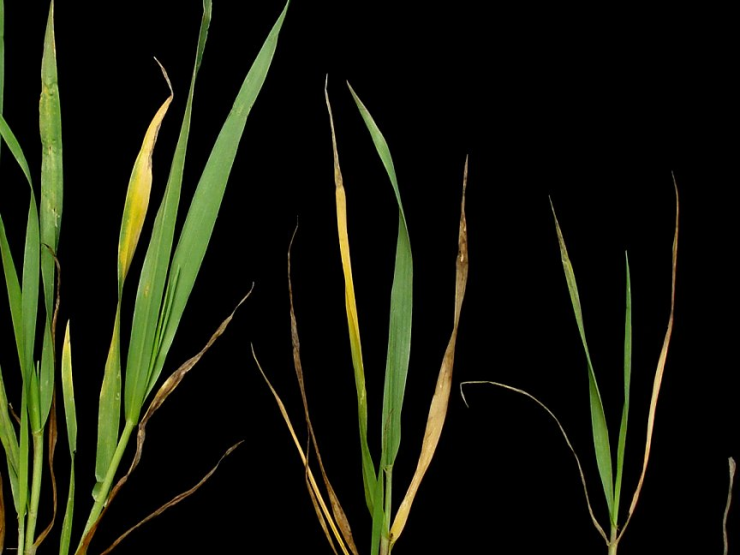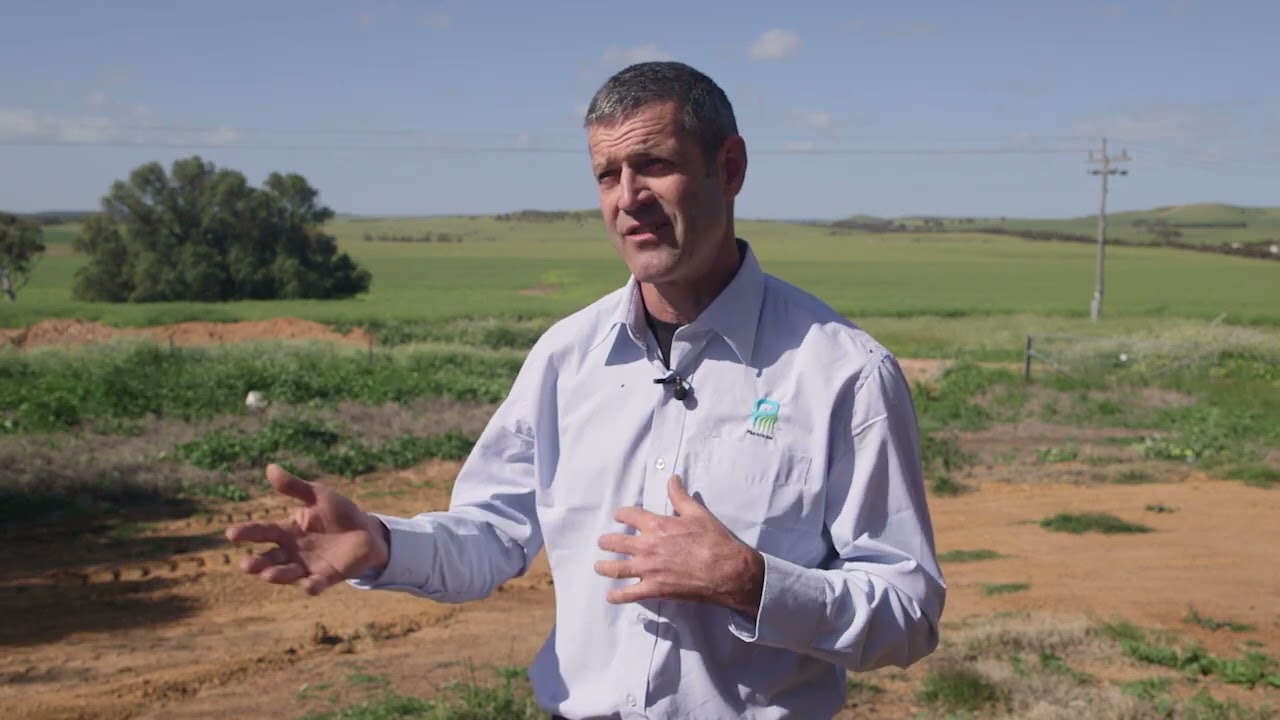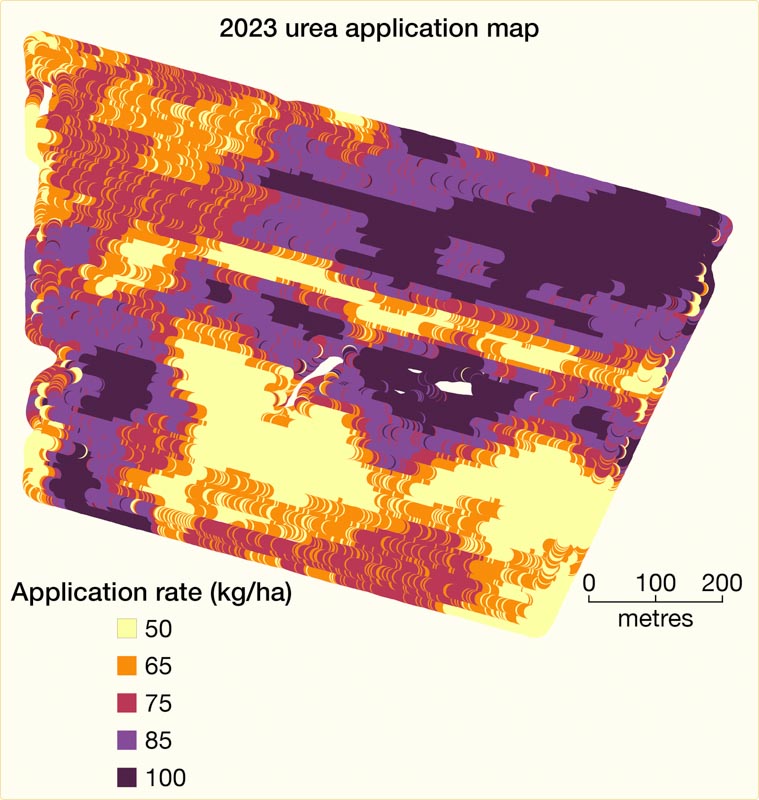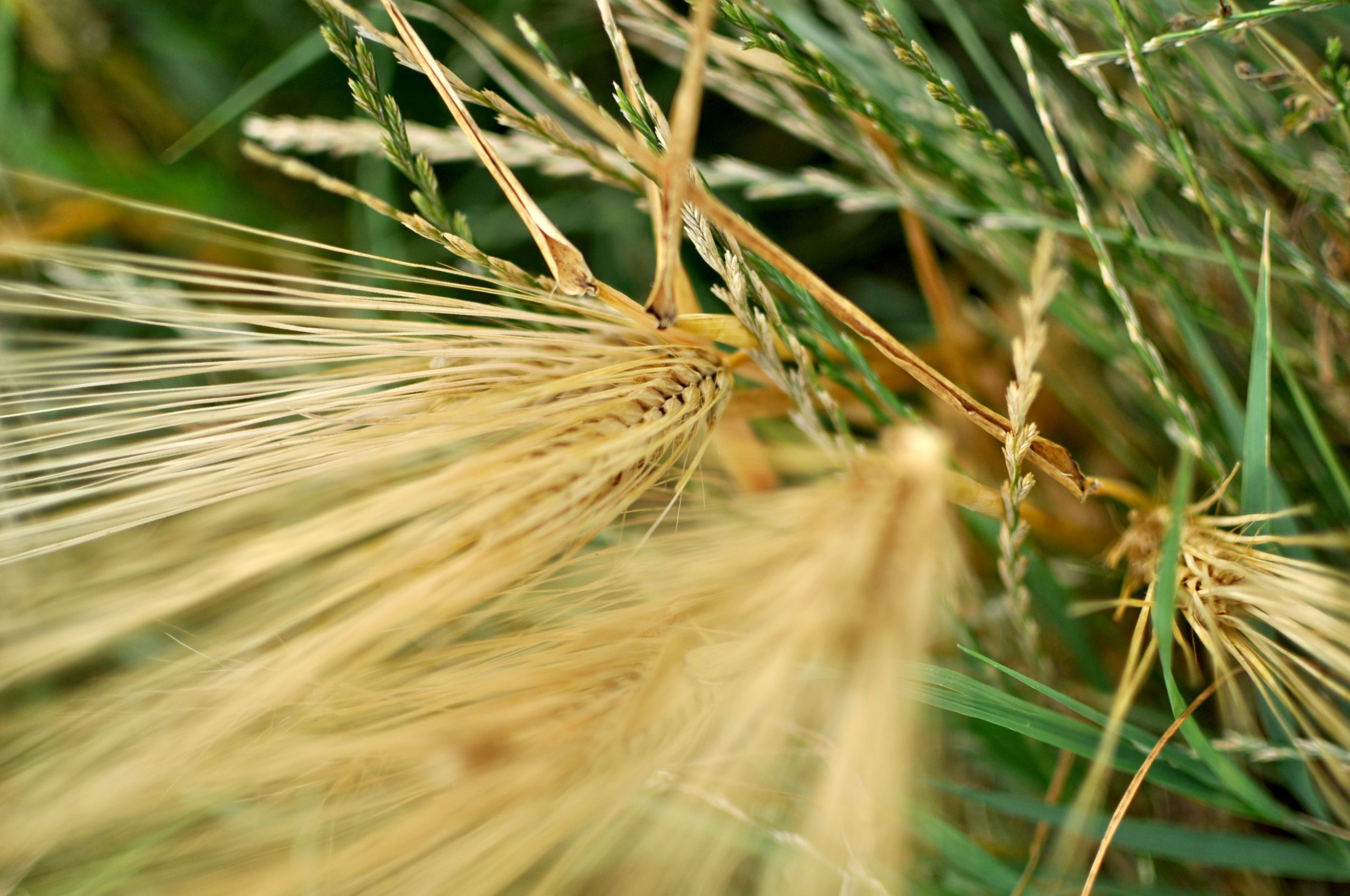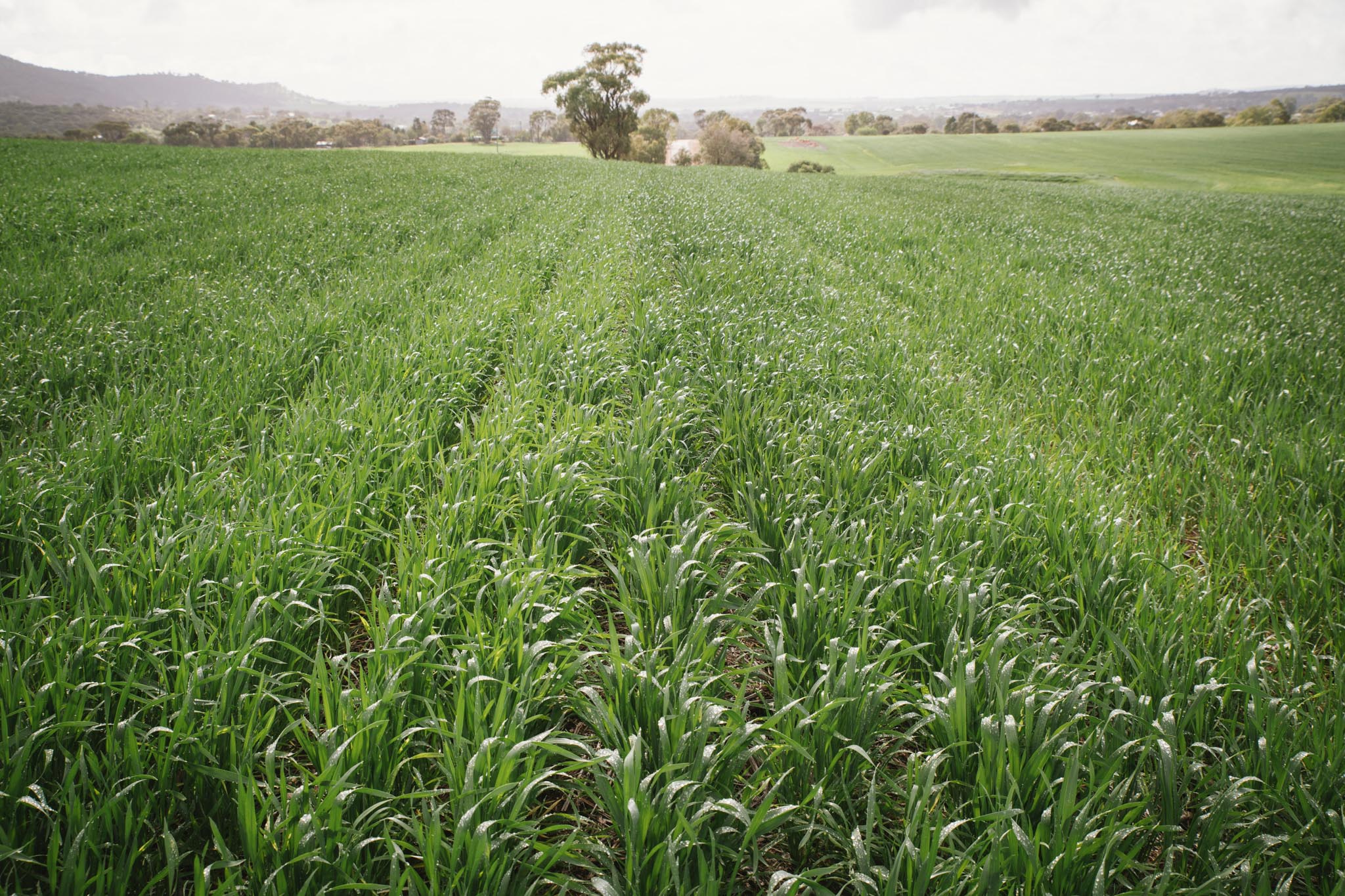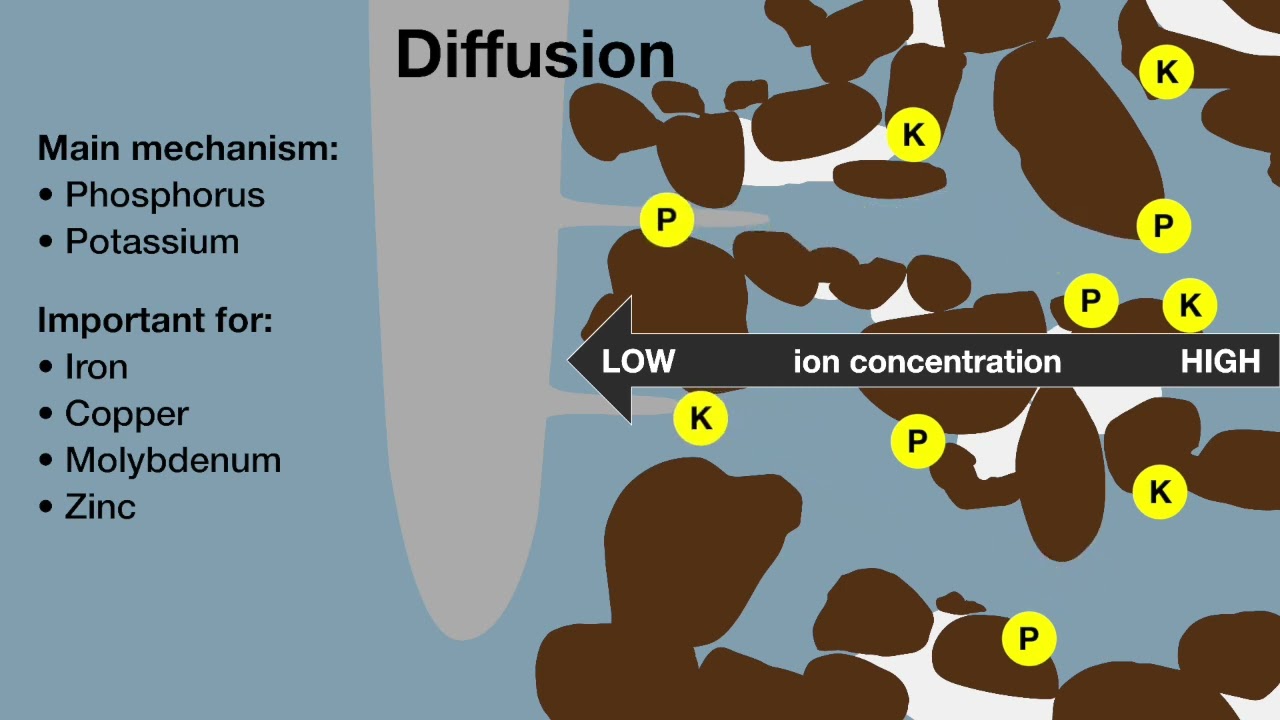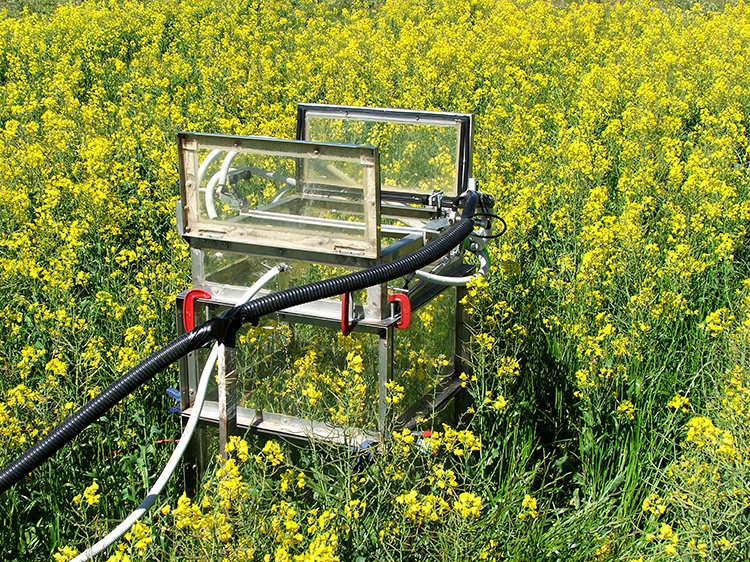Why is nitrogen important for soil and plants?
Nitrogen is required in large amounts at critical stages of plant growth and can readily become deficient, resulting in a lack of chlorophyll which is required for photosynthesis.
Nitrogen is required for healthy plant growth and physiological development, and less than optimal amounts will constrain potential yield and protein quality. Oversupply can also adversely affect plant growth and yield. Farmers should aim to apply nitrogen to meet crop demand in order to reduce environmental losses and maximise fertiliser efficiency. Plants will use nitrogen to increase vegetative growth and therefore set up yield potential, this then increases their photosynthetic area in order to increase the amount of carbohydrate production and fill grain.
Nitrogen cycle
In most soils, the majority of nitrogen (>98%) is present in organic forms, whereas plants are generally only able to take up inorganic forms such as ammonium (NH4+) and nitrate (NO3–) which are often referred to as mineral nitrogen.
The supply of plant-available nitrogen in soil is a result of direct inputs from fertilisers, nitrogen fixation by bacteria (free-living or symbiotic) and the breakdown (mineralisation) of organic matter. However, the amount of available soil nitrogen is determined not only by supply, but also its transformation, movement and fate within the resulting from processes of fixation, leaching, and gaseous losses.
Mineralisation of organic matter results in the release of NH4+ which can be taken up by either plants or microorganisms (immobilisation) and is not readily leached from soil. If the organic matter has a high carbon to nitrogen ratio (>25), immobilisation by microorganisms may mean there is no net NH4+ available for the plants.
The rate of mineralisation depends on the type of organic matter, soil moisture, temperature and soil disturbance.
Specialist microorganisms convert NH4+ to NO3– (nitrification), which is dissolved in solution and can be taken up readily, but is also easily leached away. Inorganic fertilisers have provided historically cheap and efficient forms of nitrogen, with research suggesting between 30 and 60% of applied fertiliser nitrogen is taken up by the crop. Sufficient soil water is essential for the crop to make use of nitrogen fertiliser application and variations in rainfall cause differences in nitrogen fertiliser response.
Nitrogen fixation by legumes
Legumes are able to utilise atmospheric nitrogen through a symbiotic relationship with nitrogen-fixing rhizobacteria. Through this association, legumes are able to form specialised anatomical structures called nodules in which the chemical conversion of atmospheric nitrogen to ammonia takes place. The ammonia produced in nodules can then be converted to ammonium and used by the plant.
Applying nitrogen after a legume crop
A survey of 184 paddocks over five years in Western Australia revealed that the average residual fixed nitrogen after harvest was 41 kg of nitrogen per hectare after a lupin crop, and 94 kg of nitrogen per hectare after a pulse crop (Harries et al 2021, see link to publication below). About 30% of residual fixed nitrogen will be mineralised in the year after the legume crop, meaning that 12 and 28 kg of nitrogen per hectare would be supplied in the year after a lupin or pulse crop respectively. To put this into context, wheat requires about 45 kg of nitrogen of plant-available nitrogen for each tonne of grain. This means that in most cases, fertiliser nitrogen will be required for a cereal crop following a legume crop.
Further reading
Journal article Sustainability of nutrient management in grain production systems of south-west Australia
Martin Harries, Ken C. Flower B and Craig A. Scanlan (2021). Crop and Pasture Science 72(3) 197-212 https://doi.org/10.1071/CP20403
Fact sheet Nitrogen fixation of crop legumes: basic principles and practical management
GRDC fact sheet authored by David Herridge, University of New England Primary Industries Innovation Centre (2014).
Guide Inoculating legumes: practice and science
Grains Research and Development Corporation (2023)

Nitrogen and grain protein
Proteins a plant produces over its life end up as protein in the mature grain. The quality and quantity of grain is influenced by nitrogen, as nitrogen is a building block of protein synthesis.
The timing of the supply of nitrogen contributes to grain protein quality and quality, as plants incorporate nutrients into grain at different rates at different parts of the growing season. Fertiliser strategies and other agronomic practices can be tweaked to help the plant optimise nutrient use when it is incorporating nutrients into grain. Split applications of nitrogen have commonly been considered one reasonably effective strategy to increase grain protein quantity.
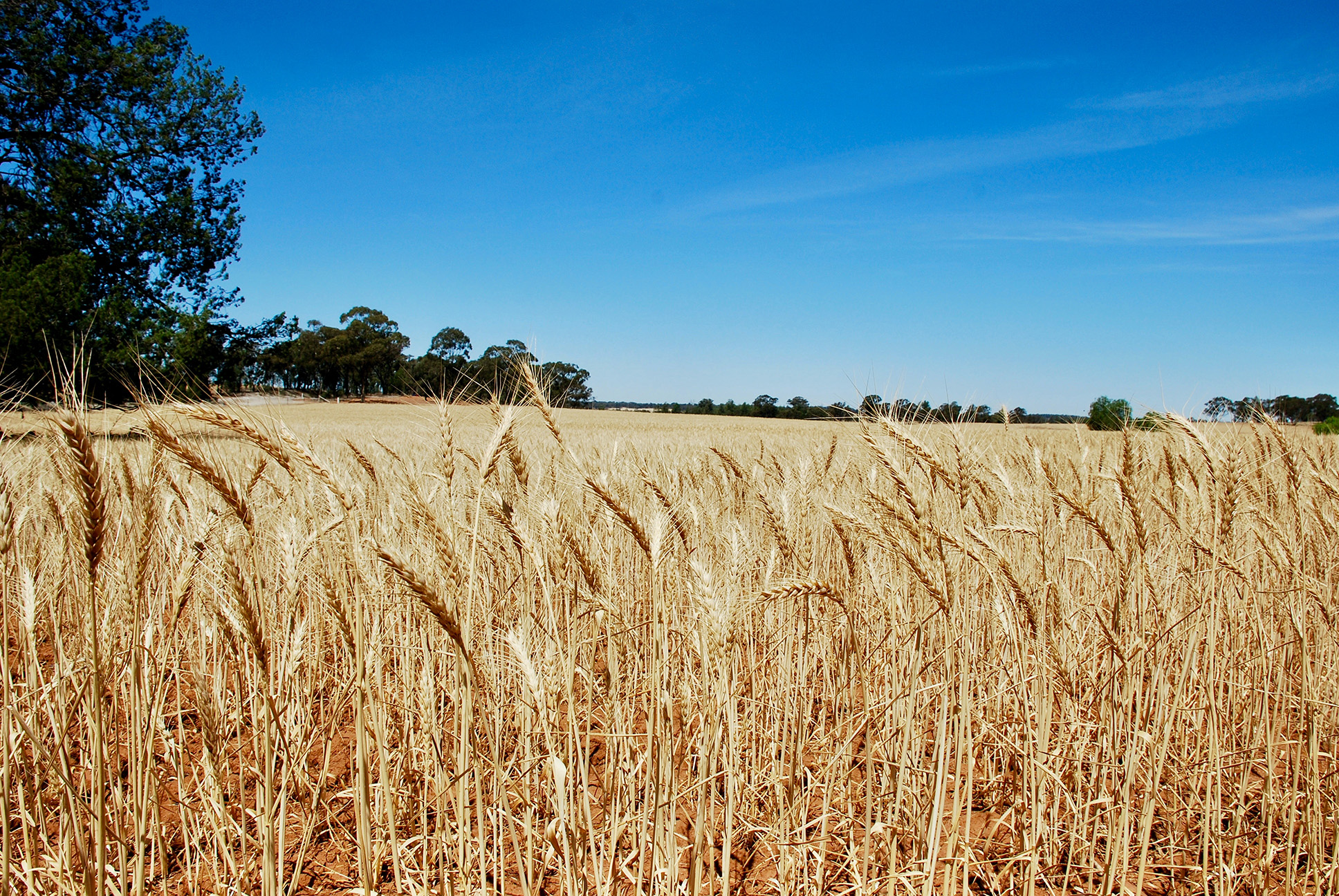
What are the problems caused by nitrogen deficiency?
Where nitrogen is deficient early in the growing season, yield potential of cereals may be constrained by a lower number of tillers. Insufficient nitrogen later in the season may constrain protein and carbohydrate production, resulting in smaller or lesser grain numbers and low protein content.
What are the symptoms of nitrogen deficiency?
In the field, plants deficient in nitrogen are often paler in colour, less vigorous with fewer shoots, and are often poorer yielding with lower grain protein. Soil and plant tissue tests will help determine appropriate management for nitrogen, but other soil factors that may influence nitrogen uptake should also be considered. For example, nitrogen deficiency may not be due to a low concentration of soil nitrogen but rather to subsoil constraints such as a compaction layer or subsoil acidity that have prevented roots from accessing nitrogen deeper in the profile, or the soil profile may be too dry. Nitrogen deficiency in the field can often be patchy due to variations in soil type and condition, or failure of legumes to nodulate and fix nitrogen.
Assessing nitrogen in the paddock
Nitrogen plant tissue tests
The concentration of nitrogen in plant tissue changes over time and critical levels should be assessed based on the growth stage of the plant and accounting for seasonal variation. If the concentration falls below a defined critical level, then the plant is considered deficient.
The advantage of tissue tests is that they reflect the amount of plant available nutrients, rather than the concentration of nutrients in soil and allow you to manage your crop dynamically. Disadvantages are that they only reflect whether a plant is deficient at that point in time and do not determine whether the soil is deficient or whether a soil condition has induced the deficiency, nor do they indicate how much nitrogen fertiliser would be required to correct the deficiency.
Soil nitrogen tests
A measure of total soil nitrogen provides a general idea of the soil’s fertility but does not necessarily reflect plant available nitrogen. Measuring inorganic nitrogen levels provides an indication of what is currently available to the crop, but is not able to predict how much nitrogen will become available during the growing season.
In addition to testing nitrogen levels, soil type, crop rotation, paddock history and yield potential based on available water should all be considered when making fertiliser decisions.
In-field nitrogen sensing
Methods of assessing crop nitrogen status use the ratio of reflected near- or mid-infrared light to visible bands to measure the relative greenness of the plants within a paddock. Some systems require initial calibration to account for crop stage, row width and lighting, whilst others use their own light source and comparison of measured reflectance against known standards.
These methods aim to determine which areas of the crop are likely to be nitrogen deficient, and some produce a spatial map of nitrogen status or are linked directly to a liquid nitrogen applicator for on-the-go measurement and fertilisation in one pass.
Visual observation
Visual symptoms such as stunted early growth, fewer tillers, yellowing older leaves, pale new leaf growth can be used to identify potential nutrient deficiencies.
Familiarity with deficiency symptoms for different crop types and soils can be an effective tool for diagnosis, and complementary to follow up plant and soil testing. While useful, be aware symptoms often only appear when the deficiency is severe and can be misdiagnosed if they resemble damage effects of herbicide, pests or disease.
PAGE REFERENCES AND ACKNOWLEDGEMENTS
Material on this page adapted from:
- Hoyle FC (2007). Soil Health Knowledge Bank.
- Soil Quality ebook series. SoilsWest, Perth, Western Australia.
Last updated July 2024.

